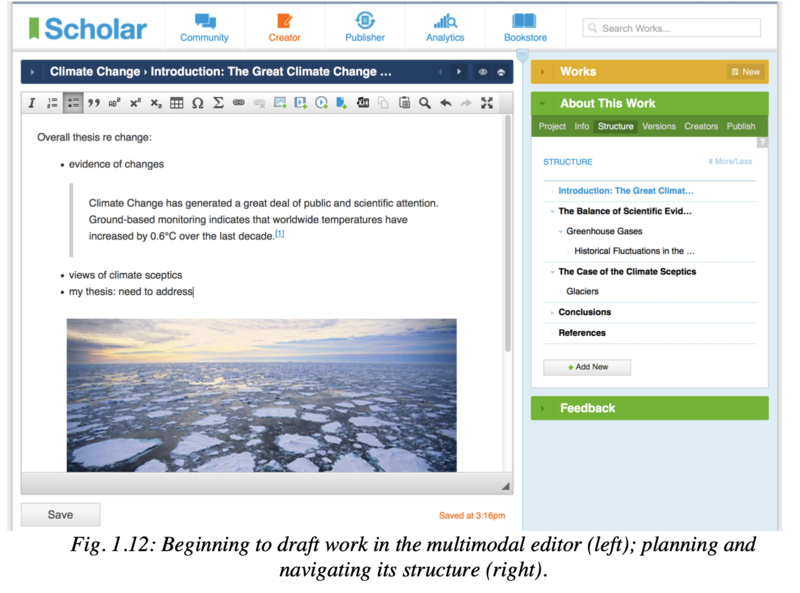e-Learning Ecologies MOOC’s Updates
Multiliteracies: How to Make it Stick
Now that I have participated in this online course, I see the connection between multiliteracies and synesthesia. In Cope & Kalantzis’ chapter on “Conceptualizing e-Learning,” I found out how to apply the digital revolution to learner’s agency. The authors describe their “semantic editor” (p. 27) on Scholar’s “Creator” function (see attached Figure 1.12). This is where students take the helm and engage in creating, producing, and designing knowledge representations. Students can do what I do in my LMS every week, which is design digital lesson plans complete with text, images, mathematical formulas, YouTube videos, SoundCloud audios, or any other data type. With multiple modes, they are afforded multiple opportunities to communicate their ideas with cogency. Instead of submitting a homework assignment that has a simple link and no explanation (argh!), they can design a content page that features an embedded video and keep going with written words, visual memes, and audio clips until they are satisfied that they’ve illustrated their point on a page that they’re in control of. In this way, students become co-designers of our digital ecology, which is especially relevant for diversity, equity, and inclusion in the STEM field and low digital literacy in adult learners.
In the lecture videos, we learned to refer to the cognitive mode cultivated by “Creator” as synesthesia. This style of learning requires the student to switch from one “mode” to another, as evidenced in the various functions on “Creator.” The switching of modes to solidify learning is a principle that I recently learned about from my current book, “Make it stick: The science of successful learning” by Brown et al. (2014). In this book, these researchers discuss the importance of interleaving (mixing) a sequence of practice problems rather than clustering them by similarity. Through Scholar’s “Creator” tool, students can interleave their learning practice by synthesizing Written, Oral, Image, Sound, Gesture, and Tactile communication. Such synesthesia-based projects seem like they would increase learning and prepare them for fulfilling careers by requiring them to draw from a multiplicity of sources.
As educators, we must dedicate ourselves to creating the learning conditions for inclusive social participation. Twenty-five years ago, multiliteracy researchers posed issues of difference through the following questions that are still relevant today: “How do we ensure that differences of culture, language, and gender are not barriers to educational success? And what are the implications of these differences for literacy pedagogy?” (The New London Group, 1996). Multiliteracies and synesthesia in e-learning ecologies are excellent ways to continue the dialogue of two sides of the same coin: agency and barriers to educational success.


